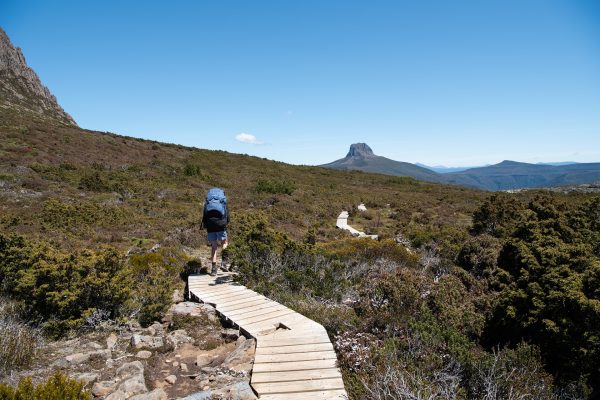
Trekking season is ramping up in Australia, and a common question we get from customers is,
“What vegetarian backpacking meals do you suggest for taking to the Australian outback?”
To make food planning easy and quick, consider our combo meals. Outdoor Herbivore’s 5-day backpacking food combo is perfect for multi-day hikes such as the Overland Track, Three Capes Track, Western Arthurs Traverse, and other trails in the outback. The 5-day combo contains 3 meals per day or 15 meals in total and 1 snack. If you plan to stay out longer, we also have 7-day and 10-day bundled backpacking meal combos. Combo packs contain customer favorites, so you can’t go wrong with choosing any one of these. Our multi-day packs include a daily breakfast, lunch, and dinner entrée.
Keep in mind that the combo packs are not meant to be your only food for the entire trek. Most hikers must supplement the combo meals with 1-2 daily snacks and drink mixes. Also, some of our combos contain spreads, such as instant hummus, that require you to bring crackers or bread. Make sure you check the menu before you leave for the trail.
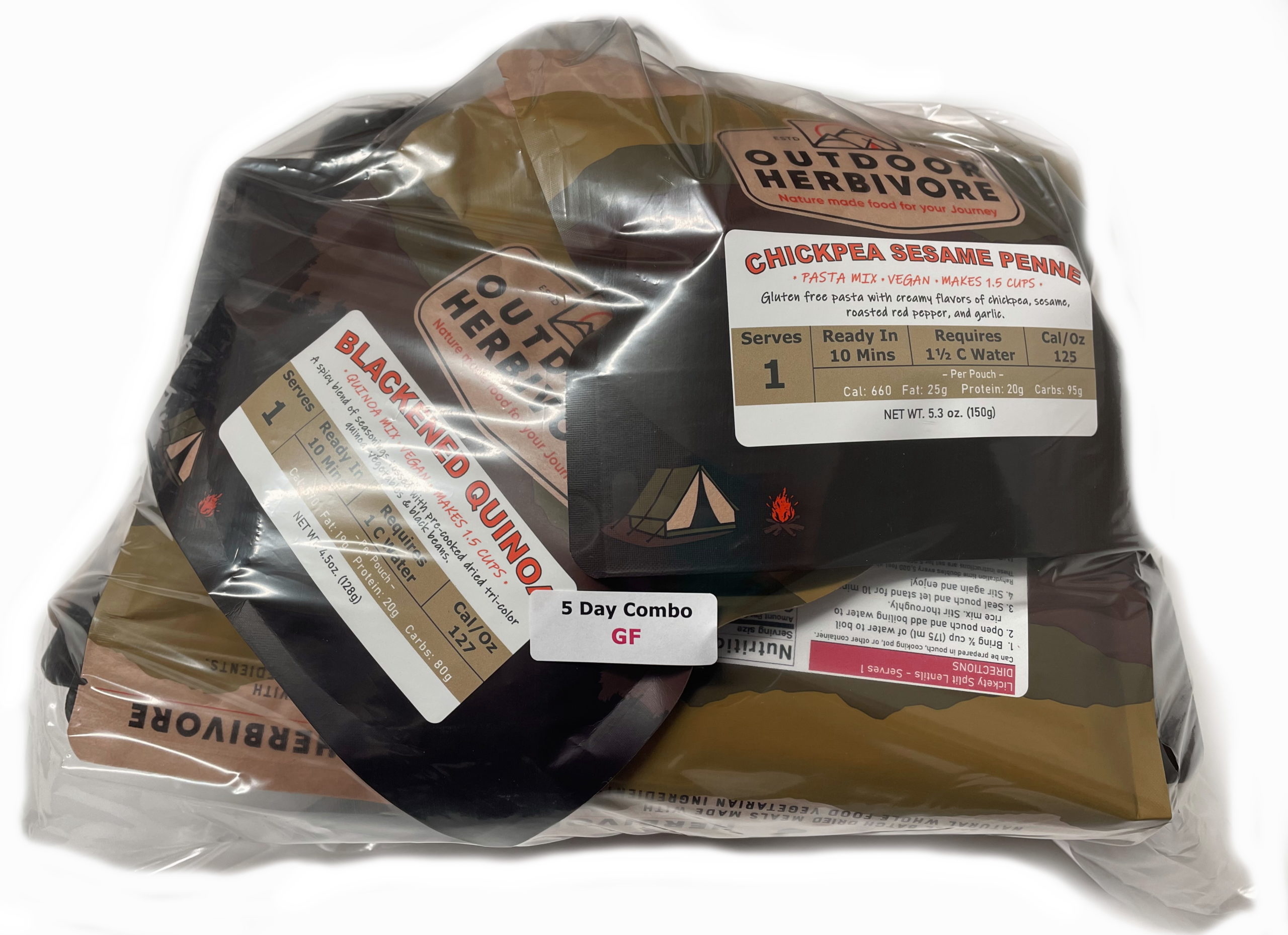
Food Planning Tips for Backpacking the Outback
1. Pack 700 to 900 grams of food per day
To meet your calorie requirements, plan to carry 700 to 900 grams of food per day with a weight-to-calorie ratio of at least 4 calories per gram. Most hikers consume 3,000 calories per day, with some variation on either side, depending on body weight, appetite, and exertion level.
2. Consider your appetite
Some hikers do better eating smaller meals in the morning and afternoon, with frequent snacking throughout the day, followed by a large meal in the evening. If that describes you, we recommend our single-size combo with added snacks.
- Outdoor Herbivore’s 5-Day Combo weighs 2 kg and packs 8,850 calories. When spread over five days, it works out to below 2,000 calories per day. This alone may not be enough to sustain you. We recommend adding a few high-calorie snacks and desserts for additional calories. Note: If you have an enormous appetite, consider our double-size meals, which contain 3 cups of food per pouch and double the calories of our single-sized meals.
3. Carry snack foods & recovery drinks
Frequent snacking to nibble on as you walk is essential for maintaining energy levels. For those moments when you need a quick energy boost, we’ve got you covered with a variety of delicious and calorie-packed snacks. From dried mango cheeks to sweetened plantain chips, these snacks taste great and provide the energy you need to keep going. For instance, one snack bag of CinnaMonkey Chomps packs over 800 kcal (3600 kJ). Some of our favorite snacks featured below are not only big on taste, but also calories!
CinnaMonkey Chomps, a 170 g bag packs 860 Cal (3601 kJ)
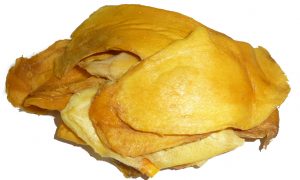
Hillcrest Harvest Mix, a 113 g bag packs 520 Cal (2176 kJ)
Other Food Examples:
- Muesli bars, Scroggin/trail mix, fruit leather.
- Powdered cheese, spreads, nut powder/butter, and flatbread. Hummus and pesto are a hit!
- Powdered recovery drinks. Fizzy citrus drinks are refreshing on a hot afternoon and replenish Vitamin C. Hot cocoa is comforting at night;
- Desserts include chia seed pudding, custard pudding mixes, dark chocolate, and other sweets you like.
- While fresh food is generally not durable enough for multi-day backpacking adventures (or worth its carrying weight), we recommend packing carrots and avocados. These resilient two can handle the packing abuse and provide a refreshing touch to your meals. Avocados, in particular, are worth their weight in fat calories, while carrots satisfy your craving for fresh food and pair well with high-calorie spreads such as hummus. For longer journeys, you may also consider trail sprouting for a continuous supply of fresh food.
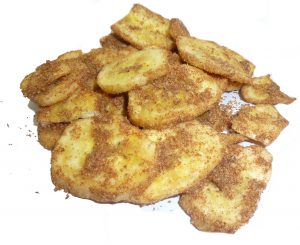
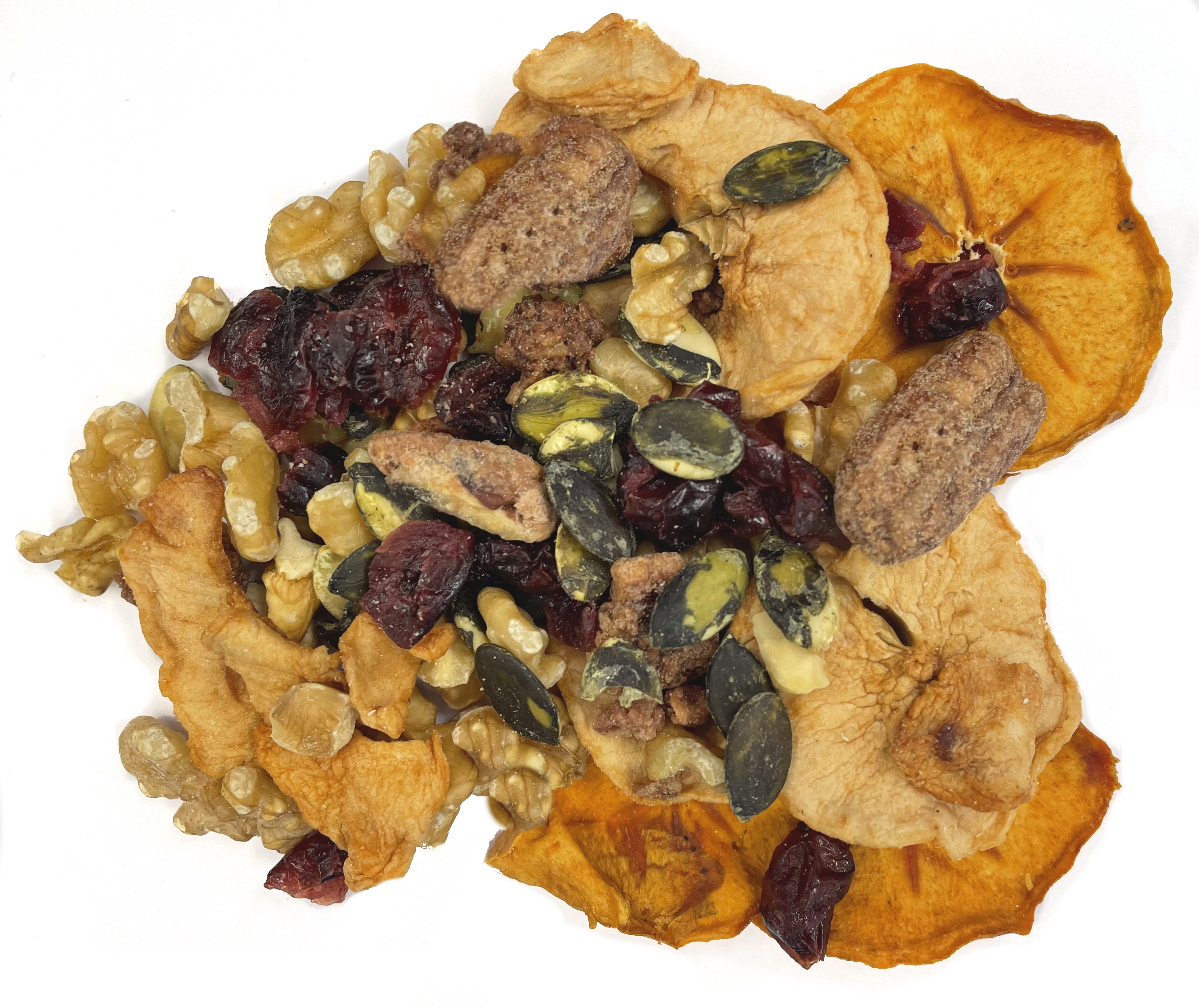
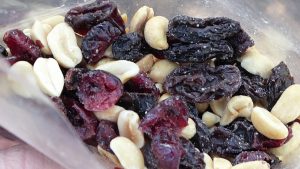
 Outdoor Herbivore regularly ships to Australia.
Outdoor Herbivore regularly ships to Australia.